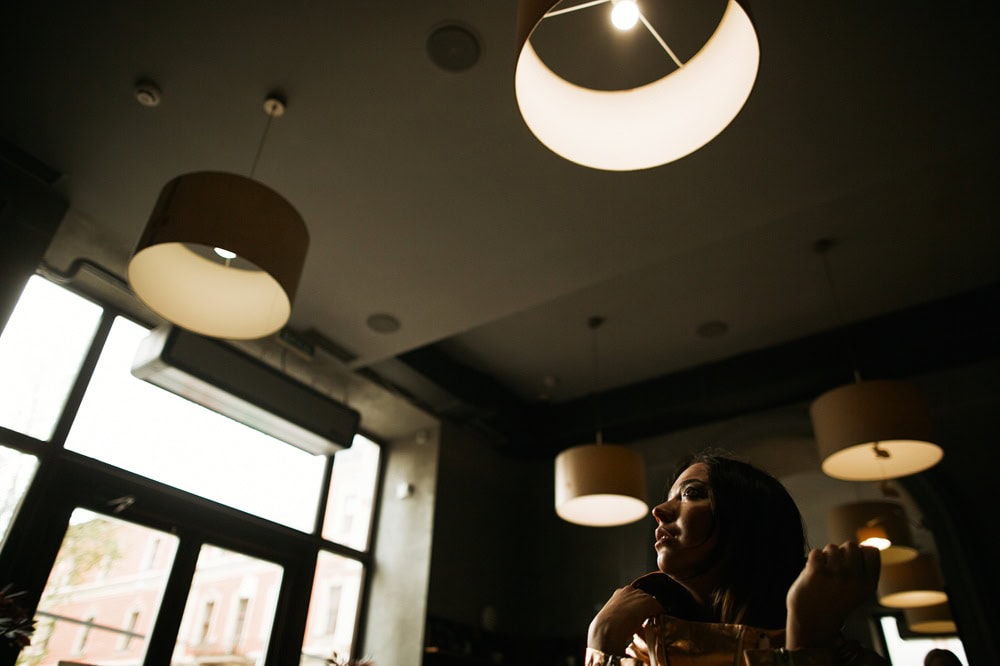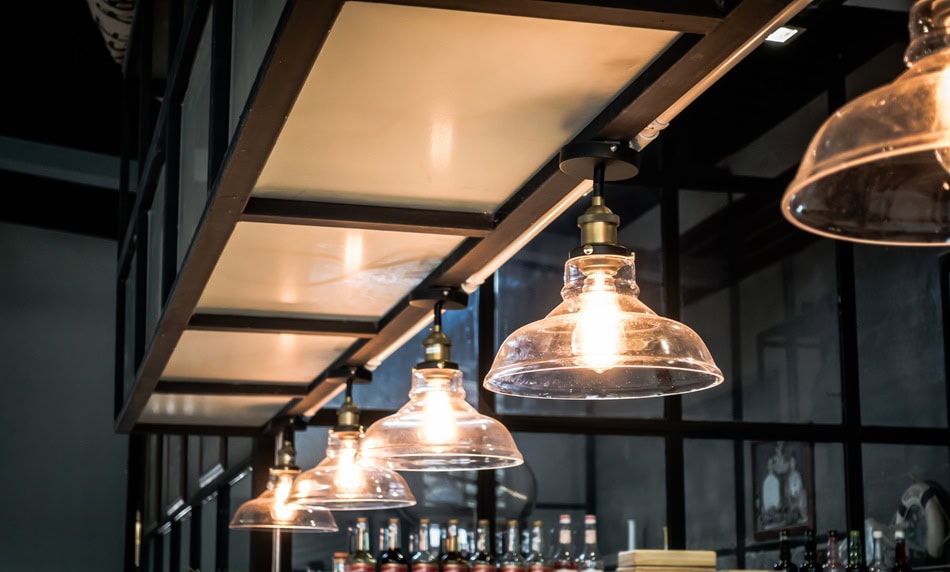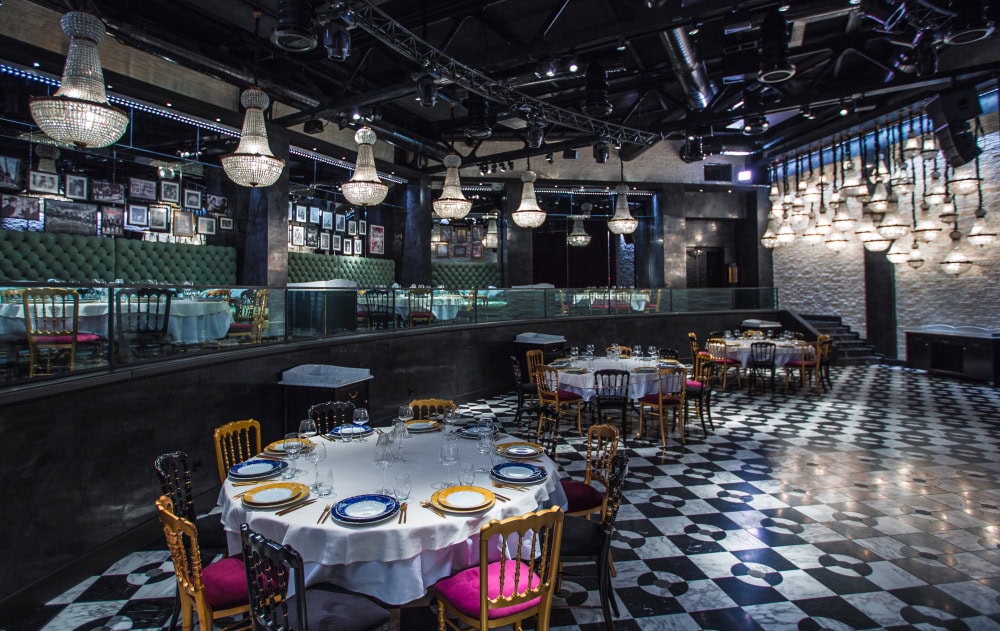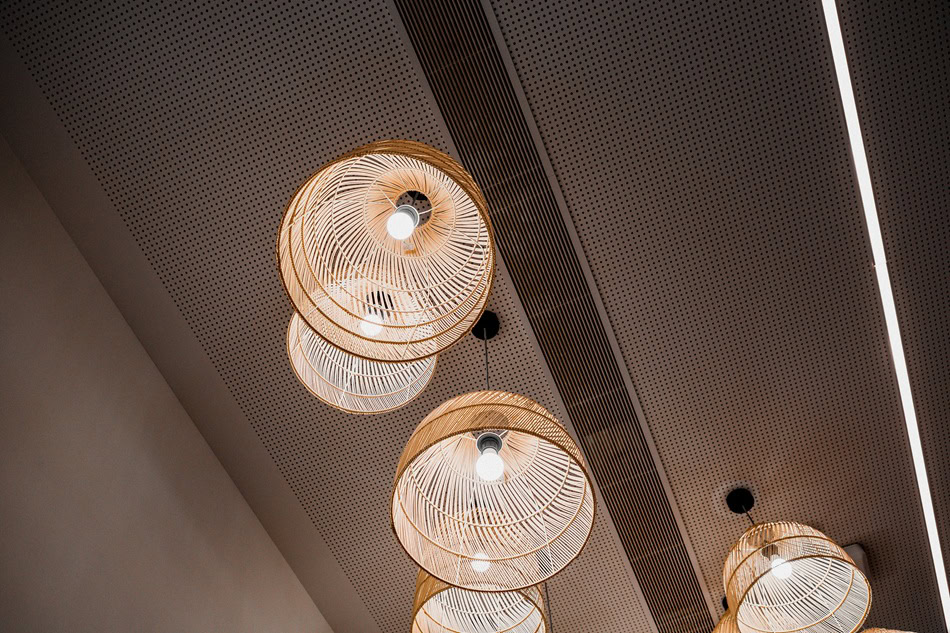Most people don’t realize it. But the way a space is lit subtly changes how they move, how they talk, how long they stay and, if you’re running a business in the hospitality industry, how much they spend while they are there.
Smart lighting is not only about making an event place look pretty. It’s also about setting the right tone at the right time without anyone having to think about it. And when it’s dialed in properly, it can do more for your bottom line than half the things people obsess over.
In this breakdown, we’ll walk through how smart lighting control drives revenue, what that looks like throughout the day and how to make it work for your space.
The Psychology of Light and Spending
Lighting affects people in ways they don’t always recognize. The tone, brightness and placement of light can shift energy levels, decision-making speed and even how much money someone is willing to spend.
Once you understand how lighting affects behavior, such as how it speeds people up, slows them down or makes them stay longer, you can start using it not just for the sake of ambience, but to drive real sales.

How brightness shapes behavior
Bright, energetic lighting makes people move faster. In restaurants, it pushes quick decisions, like grabbing a coffee or a sandwich on the go. In retail, it creates urgency and keeps customer flow steady.
Why warm light keeps guests longer
Dim, warmer tones encourage people to slow down. Conversations stretch, meals linger and the check size grows. That relaxed environment turns into more appetizers, another round of drinks or dessert orders that wouldn’t have happened otherwise.
Subconscious cues that drive revenue
Customers rarely notice these changes on a conscious level. The room simply feels right for the moment. That subtle influence is where businesses find their edge: longer visits, higher tabs and a better overall experience that customers return to.
The Revenue-Driven Lighting Strategy: A Day in the Life
A full day inside a restaurant or retail space is never static. Customer moods change with the clock. And lighting that adapts with them keeps revenue flowing. Smart operators use lighting as a silent conductor and set the pace from morning rush to late-night wind down.

Morning Energy Mode (6:00 AM – 11:00 AM)
Mornings are about movement.
Bright, welcoming light gets guests through the door, fuels quick decisions and helps staff turn tables faster. Customers grab their coffee, finish breakfast and make room for the next wave without feeling rushed.
Lunch Efficiency (11:00 AM – 2:00 PM)
Midday lighting needs balance.
It should be bright enough to keep energy high. But also, warm enough for business meetings or casual lunches. This mix attracts professionals who stay longer, order an extra round and treat the space as a go-to lunch spot while still keeping turnover steady.
Happy Hour Transition (2:00 PM – 5:00 PM)
As the afternoon winds down, the lights start to dim.
That slow fade signals a shift from work mode to social mode. It nudges guests to stay for happy hour instead of heading out. A well-timed transition leads to higher-margin cocktail sales and keeps the floor busy during a naturally slower period.
Dinner Romance (5:00 PM – 10:00 PM)
Evening is where atmosphere pays off most.
Warm, low lighting turns every table into a stage for connection and indulgence. Guests stay put, order premium entrées and pair them with wine or cocktails. While turnover slows, the average check climbs high enough to more than make up for it.
Late-Night Lounge (10:00 PM – Close)
After dinner hours call for a different mood.
Accent lighting and dramatic tones create exclusivity. It turns the space into a destination instead of just a dining room. Guests treat it as an experience worth extending with desserts, nightcaps and specialty drinks, all of which carry higher margins.
The Low-Voltage Advantage: Why Smart Lighting Makes Business Sense
Traditional commercial lighting systems require high-voltage electrical work, complex dimming panels and expensive installation procedures.
Meanwhile, modern low-voltage lighting systems offer undeniable advantages that impact both initial investment and ongoing profitability:

Side-by-Side Look at What You’re Paying For
| Category | Traditional Lighting Systems | Low-Voltage Smart Lighting Systems | Business Impact |
| Installation Costs | Requires high-voltage wiring, electrical conduit and costly dimmer panels. | Uses low-voltage network cabling and distributed control, reducing labor and materials. | 20–30% lower installation costs lead to faster ROI and accessibility for more businesses. |
| Control Capabilities | Lighting changes require physical access to dimmer panels or switches. | Instant scene changes from any device; centralized and remote management via internet. | Flexible, real-time control enhances operational efficiency and customer experience. |
| System Integration | Limited ability to integrate with AV or building systems. | Easily integrates with music, digital signage and AV systems. | Creates a fully immersive and synchronized environment. |
| Energy Efficiency | Fixed output lighting; inefficient use based on manual control. | Automated scheduling, occupancy sensing and demand response reduce unnecessary usage. | 40–60% energy cost savings with LED and intelligent controls. |
| Permitting Requirements | Requires Class 1 permits and inspections, slowing down projects. | Often qualifies as Class 2 wiring, avoiding most permit delays. | Faster project timelines and easier adjustments in the future. |
| Flexibility & Maintenance | Future changes require rewiring and additional permitting. | Design changes can be made quickly without new permits or major disruption. | Easily adapts to business growth or layout changes. |
The Automation Advantage: Set It Once, Profit Forever
Once a smart lighting system is in place, the real advantage is how little hands-on work it requires. You cease relying on staff to remember dimmer switches or timing cues because the system adjusts automatically.
It also matches customer behavior, seasonality and even special events. What begins as a design upgrade quickly becomes a built-in revenue engine.

Learning from real behavior
Advanced systems don’t only run on timers. They collect data on when guests arrive, how long they stay and which lighting conditions can propel higher sales.
Over time, the system fine-tunes itself and adjusts schedules based on actual customer habits rather than engaging in a guessing game.
Staying in step with the seasons
Daylight changes with the calendar and so do customer patterns. Automated lighting adapts to shorter winter days, long summer evenings or shifts in holiday traffic.
Businesses no longer have to manually reset scenes. The system keeps the atmosphere consistent year-round without staff intervention.
Event-ready adjustments
Special events often call for different moods and automation makes that seamless. Systems can be tied into reservation platforms, event calendars or even social media triggers.
A private party, a playoff game or a seasonal promotion gets the right lighting scene automatically to ensure the environment always matches the occasion.
Data that connects atmosphere to sales
Beyond control, automation provides measurable insight. For example, reporting dashboards show how different lighting levels affect sales, dwell time and customer satisfaction.
This feedback loop lets managers continually refine strategy. It creates a direct link between atmosphere choices and revenue growth.
Smart Design Principles: Beyond Time-Based Lighting
Running your lighting system on a fixed schedule is better than nothing. But it’s far from the full picture. The most profitable spaces don’t just follow the clock; they follow the customer.
Designing lighting scenes around behavior, not just time, allows businesses to match their atmosphere to how people actually feel, move and spend in the space.

Scenes that match real-life moments
Customers don’t think in lighting presets. They respond to how a space makes them feel in the moment. That’s why behavior-based scenes outperform rigid time blocks.
- Pre-Game Energy: Bright, high-contrast lighting that builds anticipation before a sporting event or concert. It can boost orders for food and drinks.
- Intimate Dining: Focused, warm lighting that pulls attention toward the table and away from distractions. Couples feel tucked in even in a packed venue.
- Late-Night Lounge: Layered lighting that adds depth and mood. Patrons stick around longer and businesses can command premium pricing on signature cocktails and desserts.
- Business Mode: Neutral, glare-free lighting that keeps guests alert and comfortable during working lunches or client meetings. It keeps people engaged without fatiguing them.
Transitions that guide without pushing
No one wants to feel like the lights are telling them to leave (or stay). In lieu of sudden changes, thoughtful transitions help shift the energy in a room naturally.
- Dim the lights gently 15 minutes before happy hour starts. That subtle cue invites guests to settle in and signals a shift from the workday.
- As closing time nears, a soft brightening tells customers the night is winding down without making anyone feel rushed.
- On stormy afternoons or overcast days, lighting can compensate for the gloom and keep the environment feeling balanced and welcoming.
Lighting that adapts in real time
A sudden burst of sunlight? The system compensates automatically. A big crowd walks in for a last-minute event? Scene changes adjust on the fly.
When lighting responds like this, it supports and enhances the guest experience. It keeps the space tuned, alive and ready to meet the moment, no matter when it happens.
Implementation Strategy: Getting Started with Smart Lighting
Every smart lighting system starts with one big question: Where will this make us more money? That’s the lens every decision should go through. Because when done correctly, lighting upgrades change both how your space looks and how it performs.
Here’s how to approach implementation in three focused phases:

Phase 1: Assess what you have and what you’re missing
Before anything is installed, you need to understand your baseline. Step into your customer’s shoes and walk through your space the way they would.
Where do they linger? Where do they rush? Are there dark corners hurting ambiance or overly bright areas chasing people away?
- Evaluate the current setup: Map out how existing lighting supports (or fights against) customer flow and spending patterns.
- Spot revenue gaps: Identify where improved lighting could augment traffic, dwell time or average check size. Think peak hours, awkward in-between times or underused seating zones.
- Check infrastructure readiness: Make sure your building has the network access and low-voltage capacity to support modern systems.
- Build a budget around ROI: Rather than asking what you can afford, ask where investment will return fastest. Begin where lighting can make the biggest impact and expand from there.
Phase 2: Start where it counts
Don’t retrofit everything at once. Prioritize the areas that drive revenue: the bar, the dining floor, the front retail zone. These are your test beds and your proof of concept.
- Focus on primary revenue zones: These are the spaces where atmosphere is most critical and spending happens fastest.
- Install essential controls: Scene presets and automated schedules are your first step. These alone can transform flow and mood without overwhelming the team.
- Train your staff: Make sure your team knows when as well as why lighting shifts. They don’t need to be techie people. But they should at the very least understand how lighting supports their workflow.
- Track the before-and-after: Capture baseline metrics, e.g., sales, dwell time, customer feedback, so you can measure impact as soon as the new system goes live.
Phase 3: Expand and fine-tune
Once the core system proves itself, it’s time to think bigger. Lighting doesn’t need to live in its own silo. It can connect with your AV, POS and event calendars to create a fully responsive environment.
- Integrate across systems: Link lighting to music, digital signage, reservation tools and even social platforms.
- Automate smarter: Use built-in learning algorithms to fine-tune scenes based on actual usage patterns, not assumptions.
- Program for seasons and events: Design lighting shifts around holidays, game nights and local trends that affect traffic.
- Keep adjusting: Lighting should evolve as your business does. Regular check-ins and performance reviews keep the system working for your goals, not just sitting on autopilot.
Measuring Success: KPIs for Lighting ROI
Smart lighting is a revenue lever. But you can’t optimize what you don’t measure. To prove impact and fine-tune strategy, track how lighting affects spending, efficiency and long-term business health. The right data turns atmosphere into profit.

Revenue Metrics That Matter
Lighting sets the stage, but sales tell the story. Watch how different smart lighting scenes affect key revenue drivers:
- Average Check Size: Compare what guests spend under various lighting moods. Softer lighting often leads to more prolonged visits and more premium choices.
- Dwell Time vs. Spending: Track how long customers stay and whether or not that time translates into orders. There’s a sweet spot between loitering and lingering that drives the best returns.
- Upsell Rates: Are guests adding cocktails, desserts or extras more often in specific lighting setups? Smart lighting often creates the “yes” moment.
- Private Event Bookings: Lighting impacts how exclusive your space feels. Better ambiance means higher demand and higher pricing for buyouts or private events.
Operational Efficiency Metrics
Revenue is just one side of the equation. Lighting also affects how smoothly your business runs on a daily basis.
- Table Turnover Rates: Bright lighting can speed up turnover during peak hours, while dim scenes slow things down for higher evening checks. Tracking both helps balance volume and value.
- Staff Ease of Use: The best system doesn’t or shouldn’t require advanced tech skills. If your team can adjust scenes off the bat or better yet, doesn’t have to, it frees them to focus on customer service.
- Energy Use and Costs: Automated dimming, occupancy sensors and daylight tracking reduce waste. LED-based smart systems typically cut lighting energy costs by 40–60%.
- Customer Atmosphere Ratings: Watch guest feedback for mentions of vibe, comfort or ambiance. Even when they don’t mention the lighting directly, it often shapes the tone of reviews.
Long-Term Business Impact
Beyond daily numbers, smart lighting affects how people feel about your brand and whether they will become repeat customers.
- Customer Retention and Return Visits: Memorable spaces bring people back. Lighting plays a quiet but powerful role in how a place makes someone feel.
- Brand Perception: Over time, consistent lighting design reinforces a polished, thoughtful experience. That perception separates you from competitors.
- Market Positioning: In crowded sectors, the little things such as a flawless happy hour shift or a perfectly lit dining room build a competitive edge.
- Overall Profitability Uplift: When you line up all the metrics, from energy savings to check averages, the long-term ROI often speaks louder than the install cost ever did.
Lighting as a Strategic Business Tool
Every space tells a story. Lighting decides whether that story keeps people moving or invites them to stay, spend and come back again. It’s not a gimmick. It’s legitimately giving your business the ability to shape behavior on autopilot.
At Crunchy Tech, we help businesses design smarter environments that pay for themselves quietly, consistently and without micromanagement. If you’re ready to turn lighting into a long-term revenue strategy, we’re ready to build it with you.
Your lighting is already influencing customer behavior. The only question is whether it’s working for your revenue goals or against them.
